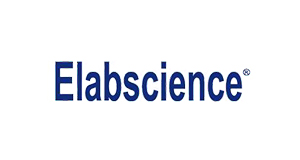Recombinant Human TIM-3/HAVCR2 Protein (His Tag)
Recombinant Human TIM-3/HAVCR2 Protein (His Tag)
Artikelnummer
ELSPDMH100006-20
Verpackungseinheit
20 µg
Hersteller
Elabscience Biotechnology
Verfügbarkeit:
wird geladen...
Preis wird geladen...
Abbreviation: TIM-3;HAVCR2
Target Synonym: CD366;HAVcr-2;HAVCR2;KIM-3;Tim-3;TIM3;TIMD-3;TIMD3
Target Species: Human
Expression Host: HEK293 Cells
Fusion Tag: C-His
UNIProt ID: Q8TDQ0
Background: Hepatitis A virus cellular receptor 2 (HAVCR2); formerly known as T cell immunoglobulin and mucin domain-3 (TIM-3); is a transmembrane glycoprotein expressed on the surface of terminally differentiated Th1 cells but not on Th2 cells. It was the first surface molecule that specifically identifies Th1 cells in both mice and human. Recently; identification of Galectin-9 as a ligand for TIM-3 has established the TIM-3-Galectin-9 pathway as an important regulator of Th1 immunity and tolerance induction. Engagement of Tim-3 by its ligand galectin-9 negatively regulates IFN-gamma secretion and influences the ability to induce T cell tolerance in both mice and man. It suggests a novel paradigm in which dysregulation of the TIM-3-galectin-9 pathway could underlie chronic autoimmune disease states; such as multiple sclerosis. Recent work has explored the role of TIM-3 in systemic lupus erythematosus (SLE); and their results indicate that TIM-3 may represent a novel target for the treatment of SLE. Numerous studies have demonstrated that Tim-3 influences autoimmune diseases; including diabetes and multiple sclerosis; and its role in other inflammatory diseases including allergies and cancer is beginning to become clear. In tumor rejection model; soluble form of Tim-3 (sTim-3) significantly impaired T cell antitumor immunity; evidenced by decreased antitumor CTL activity and reduced amount of tumor-infiltrating lymphocytes in tumor. sTim-3 as an immunoregulatory molecule that may be involved in the negative regulation of T cell-mediated immune response.
Sequence: Met 1-Arg 200
Purity: > 95 % as determined by reducing SDS-PAGE.
Formulation: Lyophilized from sterile PBS, pH 7.4.
Normally 5 % - 8 % trehalose, mannitol and 0.01% Tween80 are added as protectants before lyophilization.
Please refer to the specific buffer information in the printed manual.
Endotoxin: < 1.0 EU per ug of the protein as determined by the LAL method.
Target Synonym: CD366;HAVcr-2;HAVCR2;KIM-3;Tim-3;TIM3;TIMD-3;TIMD3
Target Species: Human
Expression Host: HEK293 Cells
Fusion Tag: C-His
UNIProt ID: Q8TDQ0
Background: Hepatitis A virus cellular receptor 2 (HAVCR2); formerly known as T cell immunoglobulin and mucin domain-3 (TIM-3); is a transmembrane glycoprotein expressed on the surface of terminally differentiated Th1 cells but not on Th2 cells. It was the first surface molecule that specifically identifies Th1 cells in both mice and human. Recently; identification of Galectin-9 as a ligand for TIM-3 has established the TIM-3-Galectin-9 pathway as an important regulator of Th1 immunity and tolerance induction. Engagement of Tim-3 by its ligand galectin-9 negatively regulates IFN-gamma secretion and influences the ability to induce T cell tolerance in both mice and man. It suggests a novel paradigm in which dysregulation of the TIM-3-galectin-9 pathway could underlie chronic autoimmune disease states; such as multiple sclerosis. Recent work has explored the role of TIM-3 in systemic lupus erythematosus (SLE); and their results indicate that TIM-3 may represent a novel target for the treatment of SLE. Numerous studies have demonstrated that Tim-3 influences autoimmune diseases; including diabetes and multiple sclerosis; and its role in other inflammatory diseases including allergies and cancer is beginning to become clear. In tumor rejection model; soluble form of Tim-3 (sTim-3) significantly impaired T cell antitumor immunity; evidenced by decreased antitumor CTL activity and reduced amount of tumor-infiltrating lymphocytes in tumor. sTim-3 as an immunoregulatory molecule that may be involved in the negative regulation of T cell-mediated immune response.
Sequence: Met 1-Arg 200
Purity: > 95 % as determined by reducing SDS-PAGE.
Formulation: Lyophilized from sterile PBS, pH 7.4.
Normally 5 % - 8 % trehalose, mannitol and 0.01% Tween80 are added as protectants before lyophilization.
Please refer to the specific buffer information in the printed manual.
Endotoxin: < 1.0 EU per ug of the protein as determined by the LAL method.

 English
English










